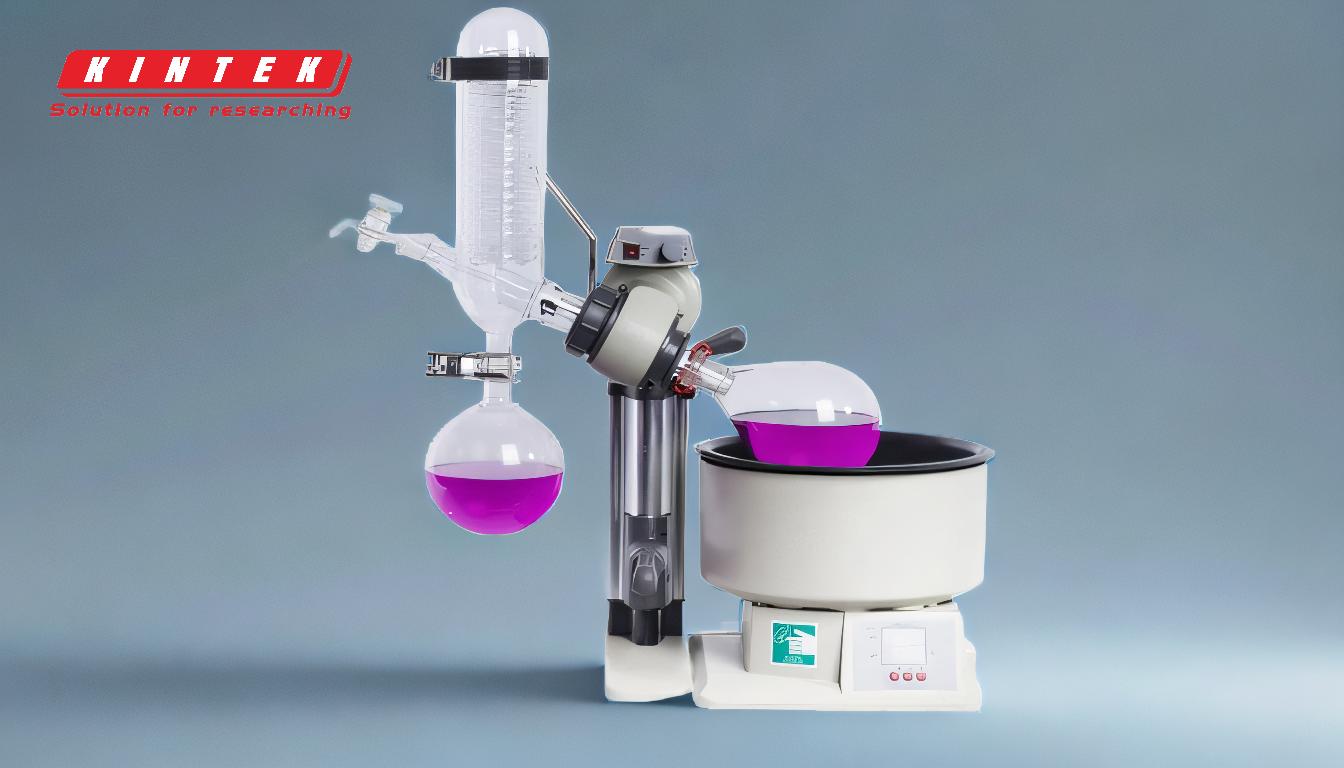Fractional distillation is a process used to separate mixtures of liquids with different boiling points. The equipment required for fractional distillation includes a round-bottom or distilling flask, a heat source, a fractioning column, a condenser, a thermometer, and receiving flasks. These components work together to heat the mixture, separate the vapors based on their boiling points, and condense the vapors back into liquids. The fractioning column plays a crucial role in enhancing the separation efficiency by providing multiple stages for vapor-liquid equilibrium. The setup is designed to ensure precise temperature control and efficient collection of the separated components.
Key Points Explained:

-
Round-Bottom or Distilling Flask:
- This is the primary container where the liquid mixture is placed. It is typically made of heat-resistant glass to withstand high temperatures.
- The flask is connected to the fractioning column and is heated to produce vapors of the liquid mixture.
-
Heat Source:
- A heat source, such as a heating mantle, hot plate, or hot bath, is used to heat the liquid mixture in the distilling flask.
- The heat source must provide consistent and controllable heat to ensure that the mixture reaches the required temperatures for vaporization without causing thermal degradation.
-
Fractioning Column:
- The fractioning column is a vertical tube attached to the top of the distilling flask. It is packed with materials (like glass beads or metal rings) that provide a large surface area for vapor-liquid contact.
- As the vapors rise through the column, they condense and re-evaporate multiple times, allowing for better separation of components based on their boiling points.
-
Thermometer:
- A thermometer is placed at the top of the fractioning column to monitor the temperature of the vapors.
- Accurate temperature measurement is crucial for determining when to collect the different fractions, as each component will vaporize at a specific temperature.
-
Condenser:
- The condenser is a cooling device that converts the vapors back into liquid form. It typically consists of a tube surrounded by a cooling jacket through which cold water flows.
- The condensed liquid is then collected in the receiving flask.
-
Receiving Flask:
- The receiving flask is used to collect the condensed liquid fractions. Multiple flasks may be used to collect different fractions as the temperature changes during the distillation process.
- Each flask collects a specific component of the mixture, separated based on its boiling point.
-
Vacuum System (Optional):
- In some setups, a vacuum pump may be used to reduce the pressure inside the distillation system. This lowers the boiling points of the components, allowing for distillation at lower temperatures, which is useful for heat-sensitive materials.
- A cold trap may also be included to catch any vapors that escape the condenser, protecting the vacuum pump.
-
Chiller (Optional):
- A chiller may be used to maintain the temperature of the condenser, especially in setups where precise temperature control is necessary.
- This is more common in advanced setups like short-path distillation.
-
Standard Glassware:
- Various standard glassware components, such as adapters, connectors, and tubing, are used to assemble the distillation setup.
- These components ensure a secure and leak-proof connection between the different parts of the distillation apparatus.
In summary, the equipment used for fractional distillation is designed to heat, separate, and condense liquid mixtures efficiently. The key components work together to ensure that each fraction is collected at the correct temperature, resulting in a high degree of separation and purity. The setup can be customized with additional components like vacuum systems and chillers for more specialized applications.
Summary Table:
| Component | Function |
|---|---|
| Round-Bottom Flask | Holds the liquid mixture; made of heat-resistant glass. |
| Heat Source | Provides consistent and controllable heat for vaporization. |
| Fractioning Column | Enhances separation efficiency through vapor-liquid equilibrium stages. |
| Thermometer | Monitors vapor temperature for accurate fraction collection. |
| Condenser | Cools vapors back into liquid form using a cooling jacket. |
| Receiving Flask | Collects separated liquid fractions based on boiling points. |
| Vacuum System (Optional) | Reduces pressure for lower-temperature distillation of heat-sensitive materials. |
| Chiller (Optional) | Maintains condenser temperature for precise control. |
| Standard Glassware | Ensures secure and leak-proof connections between components. |
Need help setting up your fractional distillation system? Contact our experts today for tailored solutions!










